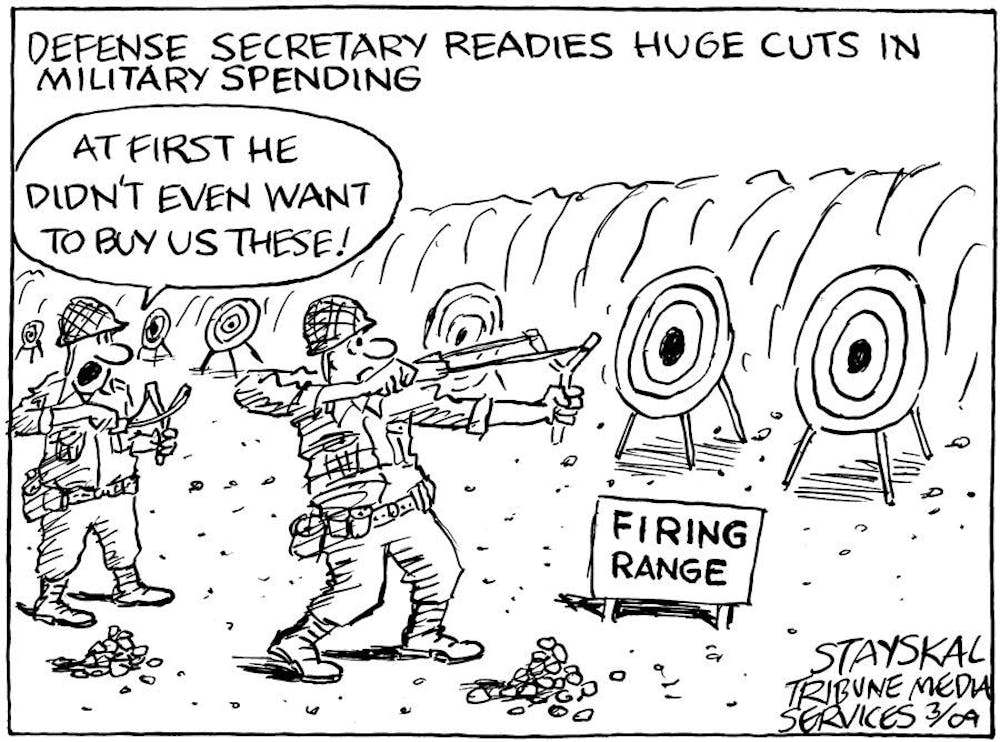The Defense Department is cannibalized by the defense industry. As a result, our active duty military personnel and national security are compromised.U.S. military spending is at an all-time high; the national defense budget for 2011 is $549 billion, not including war spending of $159 billion.
Facing cries for austerity, the president and Congress have issued a mandate to reduce our spending in all sectors of government. For defense, this may seem to be a simple task if one is just looking at the numbers. Total military spending in 2001 was $316 billion, and in only 10 years the total military budget increased 124 percent.
Certainly the terrorist attacks of 2001 triggered some necessary spending increases by the military, but I am skeptical of a 124 percent increase being wholly vital to our security.I am not questioning the motives of our top military brass or acquisitions departments; I do not doubt their intent is to provide the military with sufficient means to defend us.
I do believe, however, that the private sector defense industry, which would not exist without taxpayer money, has exploited the increase in defense spending through cost overruns, contractor waste and an outright abuse of the system.
An important piece of context to consider when looking at these numbers is the type of threat we currently face and expect to face for quite some time. War fought against terrorism is asymmetrical by nature.
Asymmetric warfare brings with it a unique set of requirements from our military. It does not require usual spending — as the Cold War did — or a conventional military threat, such as Germany during World War II. These requirements tend to fall on the cheaper side in relative military spending. For instance, a tank is not effective in an urban asymmetric environment — an armored Humvee is. A billion-dollar stealth bomber may be utilized at times, but not nearly as often as a Predator drone or remote spy plane.
Through reason, then, it would seem the acquisitional requirements for our current and long-term threats are relatively cheaper than they were during past conflicts or times of war.One could also argue that increases in technology and the reduced costs associated with the mass production of innovations would drive military spending costs further down.This is not, apparently, how the private defense industry works, which brings us to our current predicament.
Tasked with reducing government spending, the Congressional Super Committee will undoubtedly look at defense. It will be faced with difficult questions about where exactly to cut. Should there be reductions in total active duty force or reduction in research and development, reductions in acquisition of new military equipment or reductions in replacement of aging fleets?
There will be a zero sum answer, but those questions pose a false choice. What really must be considered is defense contracting and acquisitions reform.
We can and should have more for less when the reduced costs associated with technological advancement and military threat types are considered. If we do not demand reform, we all could pay the price of a weakened military.
— cdbabcock@indiana.edu
Government contractors and the false choice of defense cuts

Get stories like this in your inbox
Subscribe





